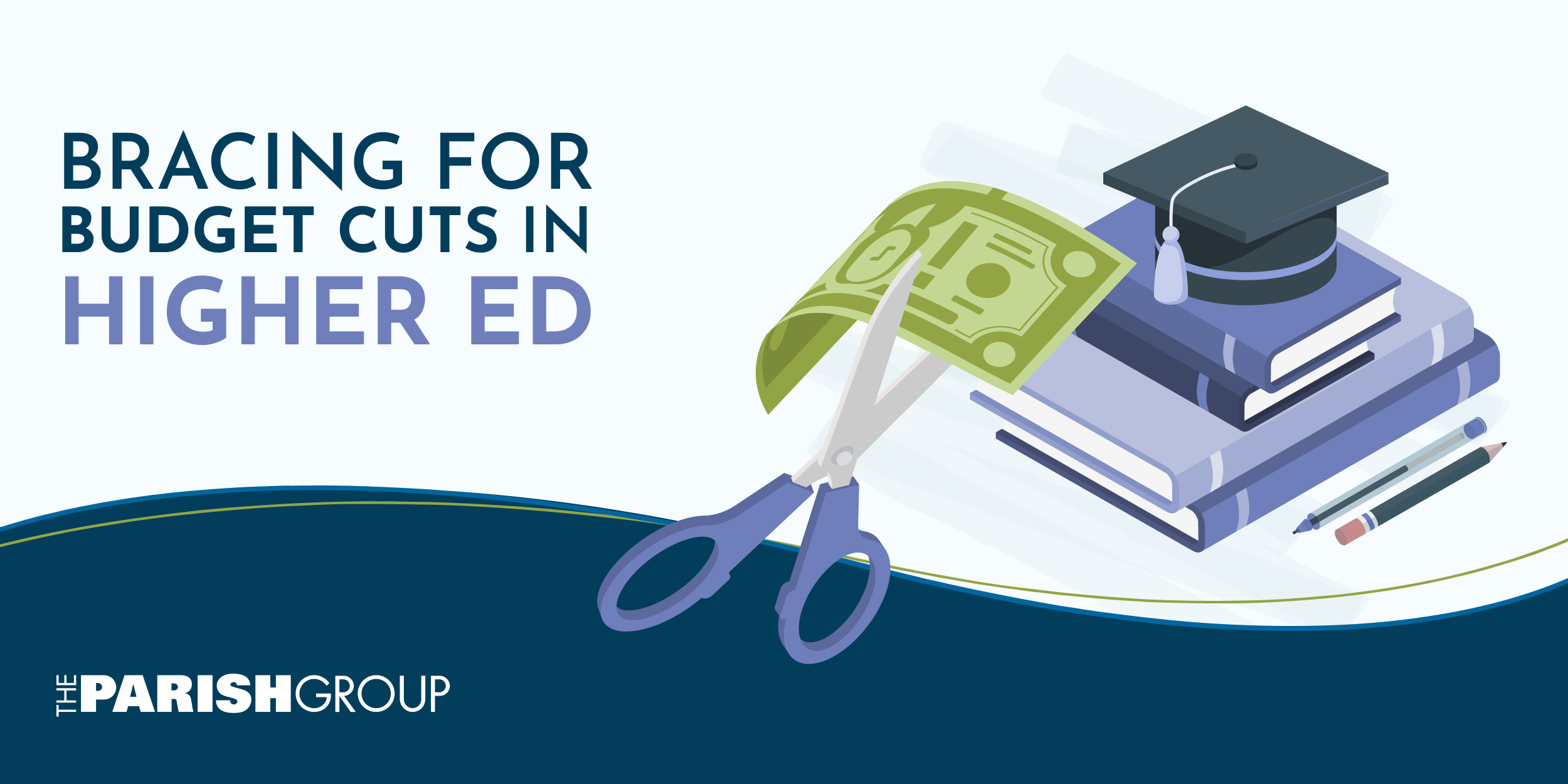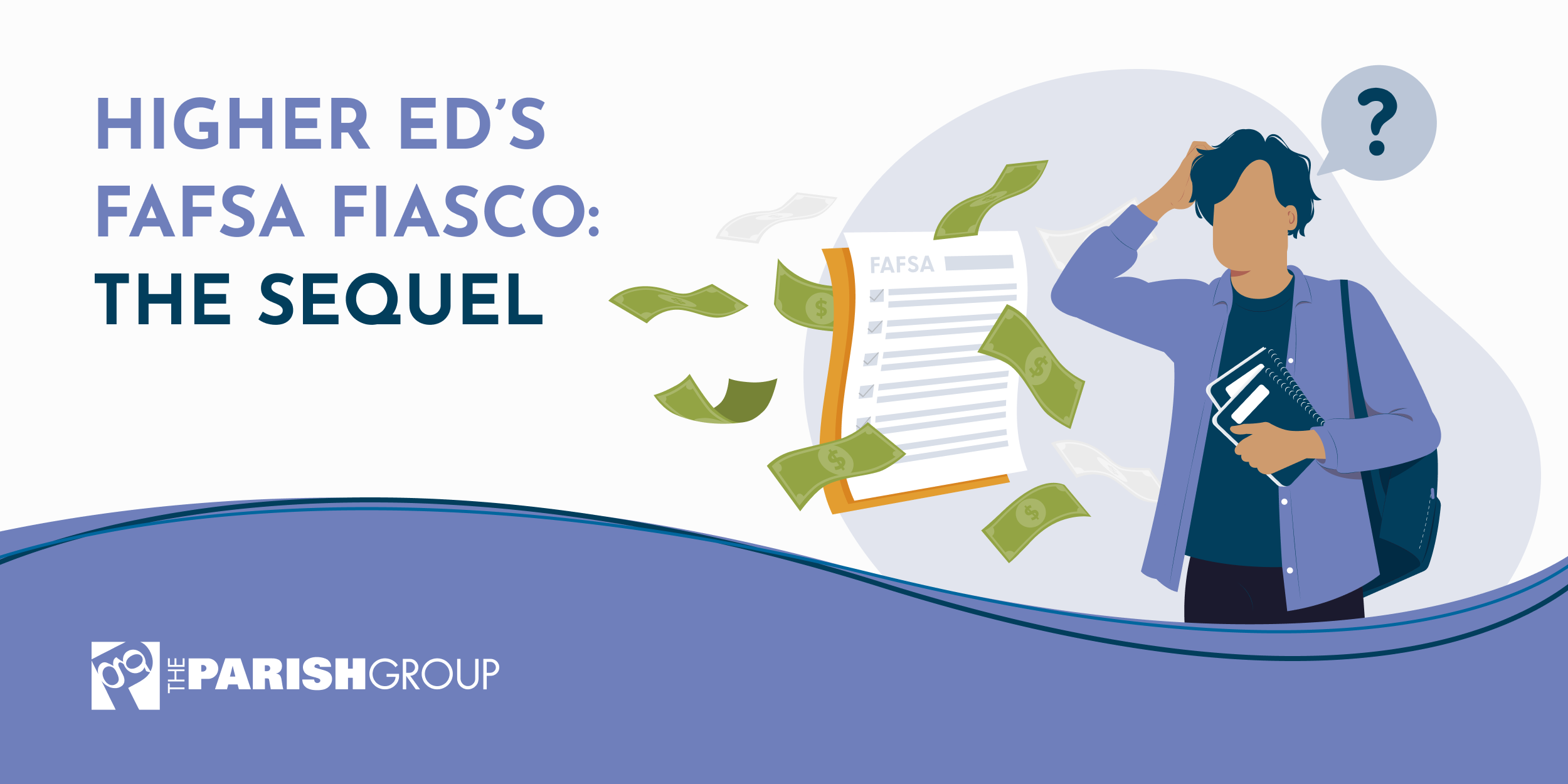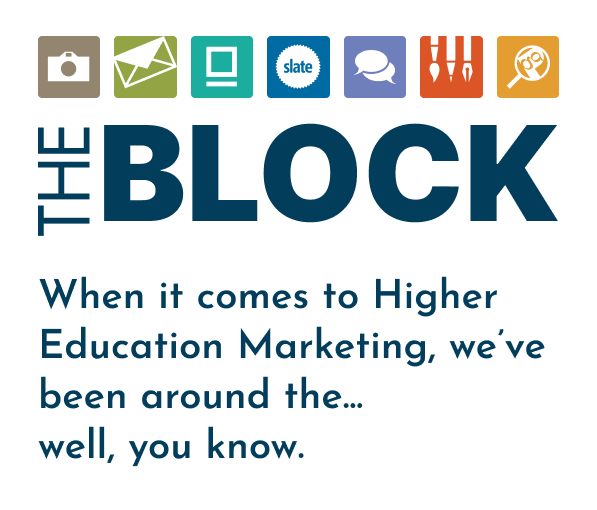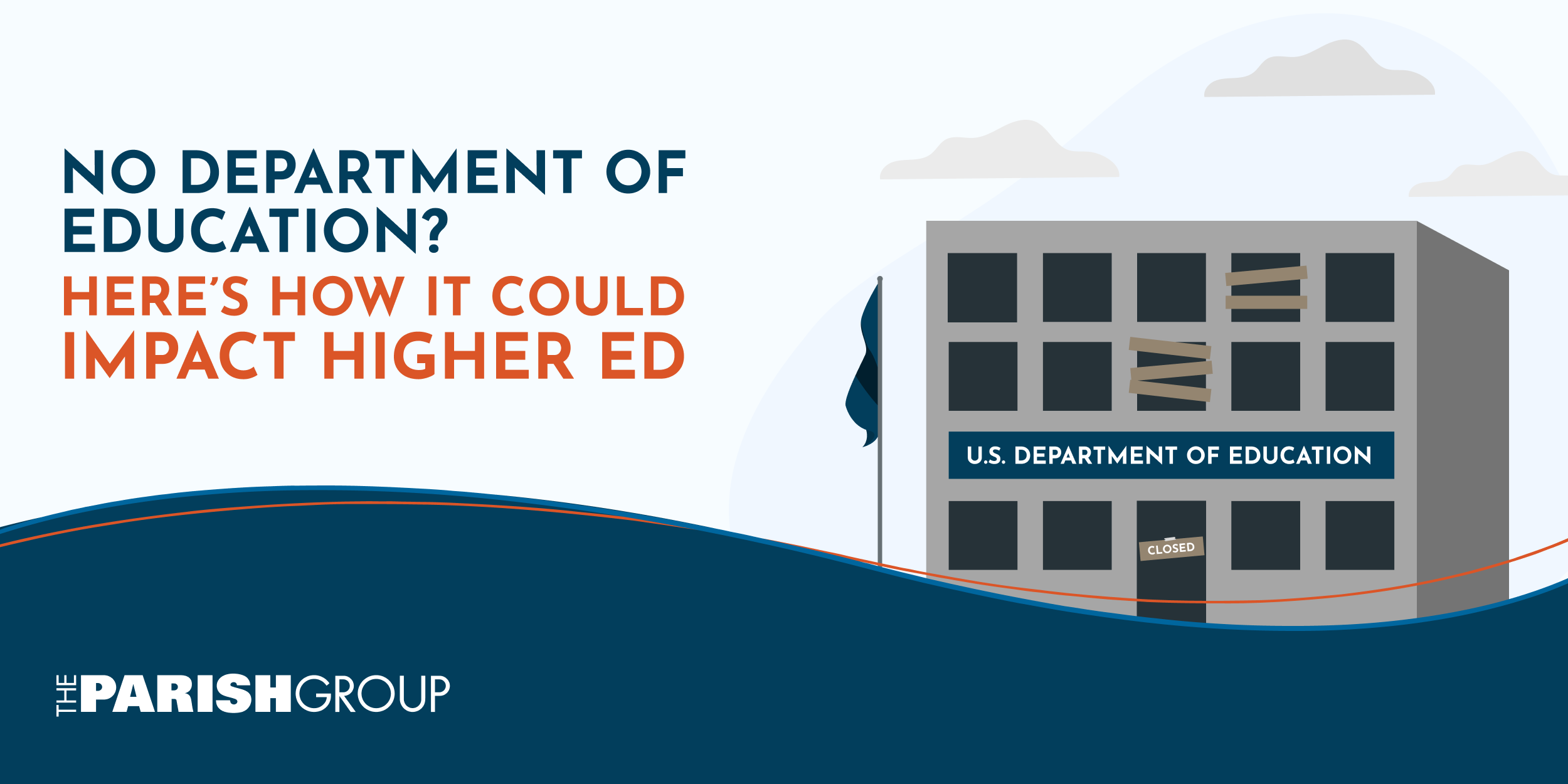
The return of the Trump administration has come with the promise of shake-ups, shake-downs, and reductions to the federal government.
It’s no secret that President Trump has had his eye on the Department of Education, with threats to eliminate it through a number of measures, including an executive order.
So what could it mean for higher education institutions if Trump eliminates the DOE? Let’s explore the potential ramifications.
Loss of Federal Financial Aid Programs
The costs of pursuing a college degree have skyrocketed in the past two decades. Blame it on a number of things—inflation, an uptick in pricey amenities, larger administrative costs—regardless, a vast majority of students cannot afford their college degree on their own. They rely on a swath of financial aid options to help them invest in their future.
The Department of Education holds the keys to the kingdom in terms of dolling out vital federal financial aid programs including Pell grants, federal student loans, and work-study programs. If the DOE were eliminated, the federal government would likely need to transfer these responsibilities to another agency or shift the burden to the states.
States however may not have the financial resources to fill in the gaps left by a long-gone DOE. If you hear budget cuts echoing in the distance, you’re not far off.
Regardless of the move, this could cause significant disruption to a financial aid landscape that’s already had numerous hiccups in the past few years (we’re looking at you, FAFSA).
Colleges may face difficulty in managing aid distribution and students could experience delays or even reduced access to financial support, making higher education even less affordable for many who see it as a way to increase their future earning potential.
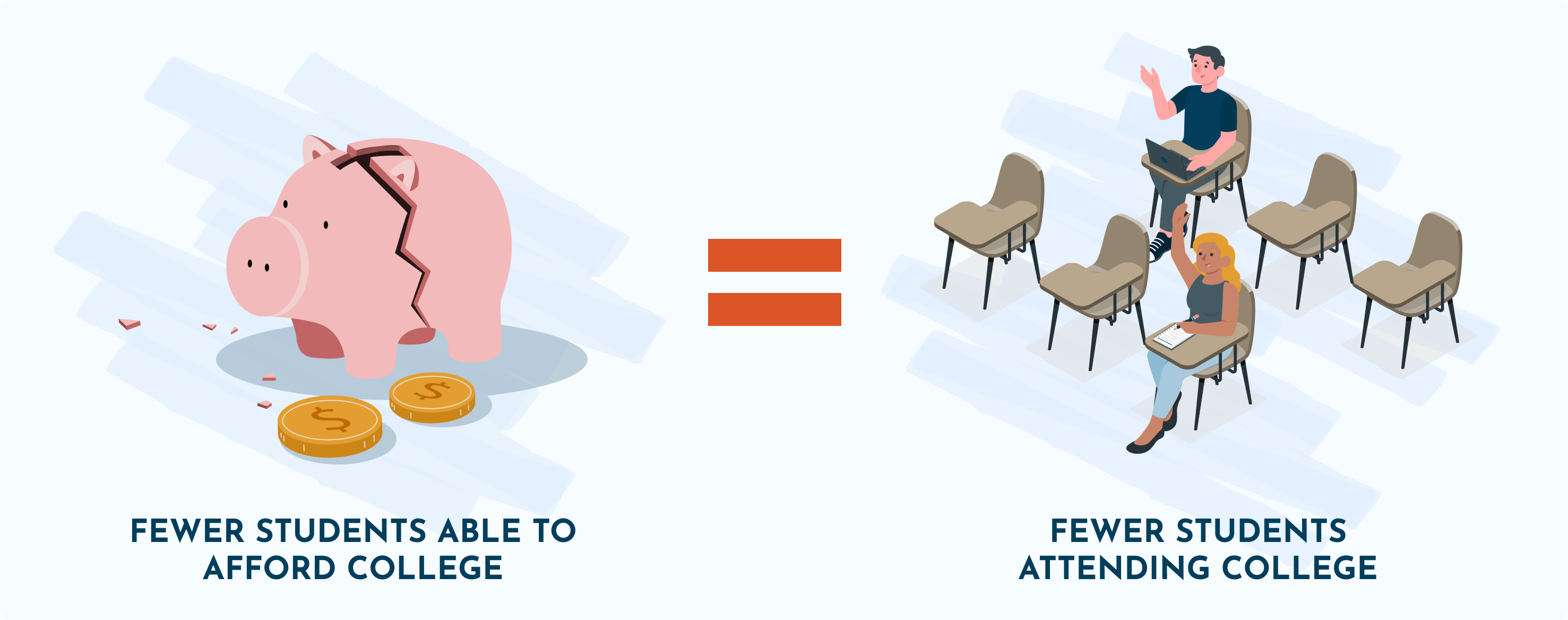
The math is pretty straightforward. With a loss of structured, federal financial aid, colleges could see a drop in enrollment, particularly from low-income and first-generation students who rely heavily on federal aid (Pell) to afford tuition and living expenses.
Institutions that serve large populations of Pell grant recipients—which culminated to about 31.6% of all institutions in the 22–23 academic year—would be particularly hit. Coupled with the fears of the upcoming enrollment cliff, we could see a massive decline in enrollment numbers as we grapple with reduced access and a smaller college-aged population.
To prepare for the future challenges in enrollment, our team has been conducting new market explorations and testing on our partner campuses. Looking for opportunities to increase enrollment will need to be level set with the new realities of decreased expenditures as budgets look to find an equilibrium. Because typically when funding models shift on campus, the marketing budget is first in the line of fire.
Increased Regulatory Complexity and Fragmentation
With the responsibility of overseeing higher education shifting to states, this move would lead to a patchwork of regulations, with each state establishing its own standards for accreditation, financial aid, and institutional oversight.
For colleges that operate across state lines or serve a national student population, this complexity could spell trouble. Not to mention this could impact the number of students who choose to go out-of-state for their education.
Additionally, accreditation could be severely impacted by this move. The Department of Education plays a critical role in recognizing accrediting agencies, which are essential in ensuring colleges meet quality standards. Without a central body like the DOE, institutions may face challenges in maintaining recognized accreditation.
We’ve seen the retaliatory measures certain states have taken over a dislike of course offerings, professorial influence, and political disagreements. Disgruntled states may take those actions to the next level if given the reins.
Overall, this can lead to a reduction in credibility and legitimacy of degrees conferred by institutions.
Impact on Higher Education Policies and Access
The Department of Education plays a crucial role in shaping the nation’s education policies. Without the DOE, we would see a void in standard federal policy direction.
Student equity access and retention could all be impacted in the crossfire. We’ve seen this administration take a hostile stance against pillars like diversity, equity, and inclusion and Title IX. These types of policies that promote education access and protect underrepresented students might lose federal backing.
This means it will become even harder to address national issues like access for disadvantaged students.
After the fall of affirmative action in 2023, we could see even more trimming or complete elimination of programs and policies designed to help underrepresented populations like first-generation students, minorities, and students with disabilities.
The absence of a federal body overseeing these initiatives might lead to less coordinated efforts across states and institutions to support these populations, and potential fear of retaliation if colleges and universities attempt to maneuver around these new rules.
Operational and Research Instability for Institutions
As mentioned above, the Department of Education disburses billions of dollars in direct aid to colleges and universities through grants, loans, and work-study programs. $241.7 billion dollars in 2024 to be exact.
Without a central federal agency, universities and colleges may experience delays or inconsistencies in receiving federal funding tied to student aid, particularly for Title IX.
This could potentially affect research as well. Federal research funding may become more difficult without a central, dedicated body to manage grants for both teaching and research funding. A fragmented, decentralized funding system may negatively impact academic programs and reduce an institution’s capacity to conduct groundbreaking research and support graduate programs.
Additionally, we may see adjustments to institutional operations in order to comply with new or restructured oversight. Reporting requirements, record-keeping, and accountability measures may all have to change significantly. That bloated administrative cost we mentioned earlier? This could bloat it even more or restructure it altogether.
Potential Increase in Privatization and Corporate Influence
Both in his first term and seemingly now, Trump is pretty cozied up to the private sector. With a shrinking of the federal government, we may see a lot of the operations typically handled by the DOE move over to the private sector.
Without the Department of Education’s oversight on federal student loans, private financial institutions could become more dominant in supplying student loans. For a sector where the bottom line is the most important line, we may see an uptick in interest rates and less favorable loan terms for students, especially those with fewer financial resources. This would only add to the massive student loan debt problem this country faces.
While federal student loans start the repayment period after graduation, some private loans start the repayment clock at the end of the semester they’ve issued the loan.
Corporate entities could have more fingers in the pie too. We may see more for-profit education companies take advantage of the less regulated environment as well as stronger corporate influence on educational policy, potentially prioritizing profit-driven motives over educational quality.
Colleges and universities could be incentivized to cater to more corporate interests. In today’s culture where the value of a liberal arts degree is already in question, this could further tip the scales towards vocational training at the expense of a well-rounded liberal arts education.
Create a Proactive Strategy with The Parish Group
Keep in mind that we’re walking through the worst case scenario. For the moment, the Department of Education still stands. Trump is also one to change his mind, so his threats to eliminate it may simmer or the courts may block or stifle this effort. A federal judge has already temporarily blocked DOGE from accessing student aid information.
Regardless, it’s important to stay in-the-know about important policies impacting higher education, and to strategize your enrollment plan accordingly. The Parish Group has a long history of staying ahead of the curve by focusing on the changing dynamics of higher education.
We are here to help you create a chaos-proof student search strategy, customized to your institution’s profile, needs, and goals.
Reach out at success@parishgroup.com or call us at 828.505.3000.
Together, we do BIG things.

